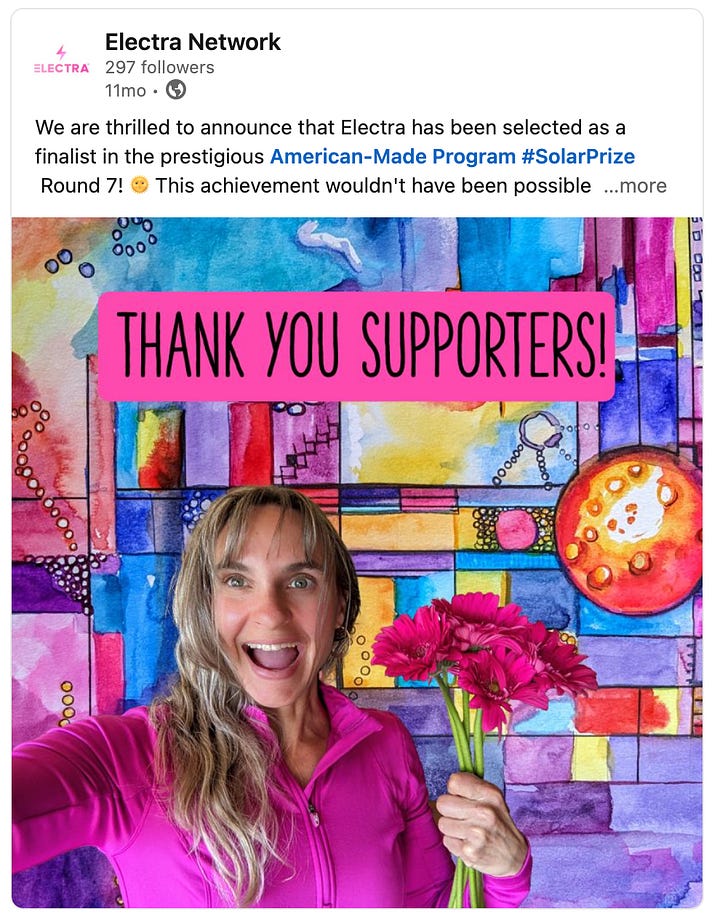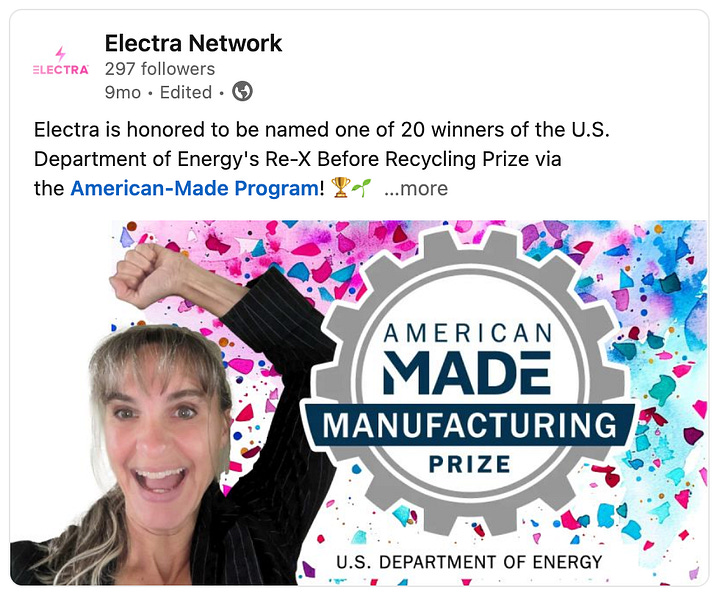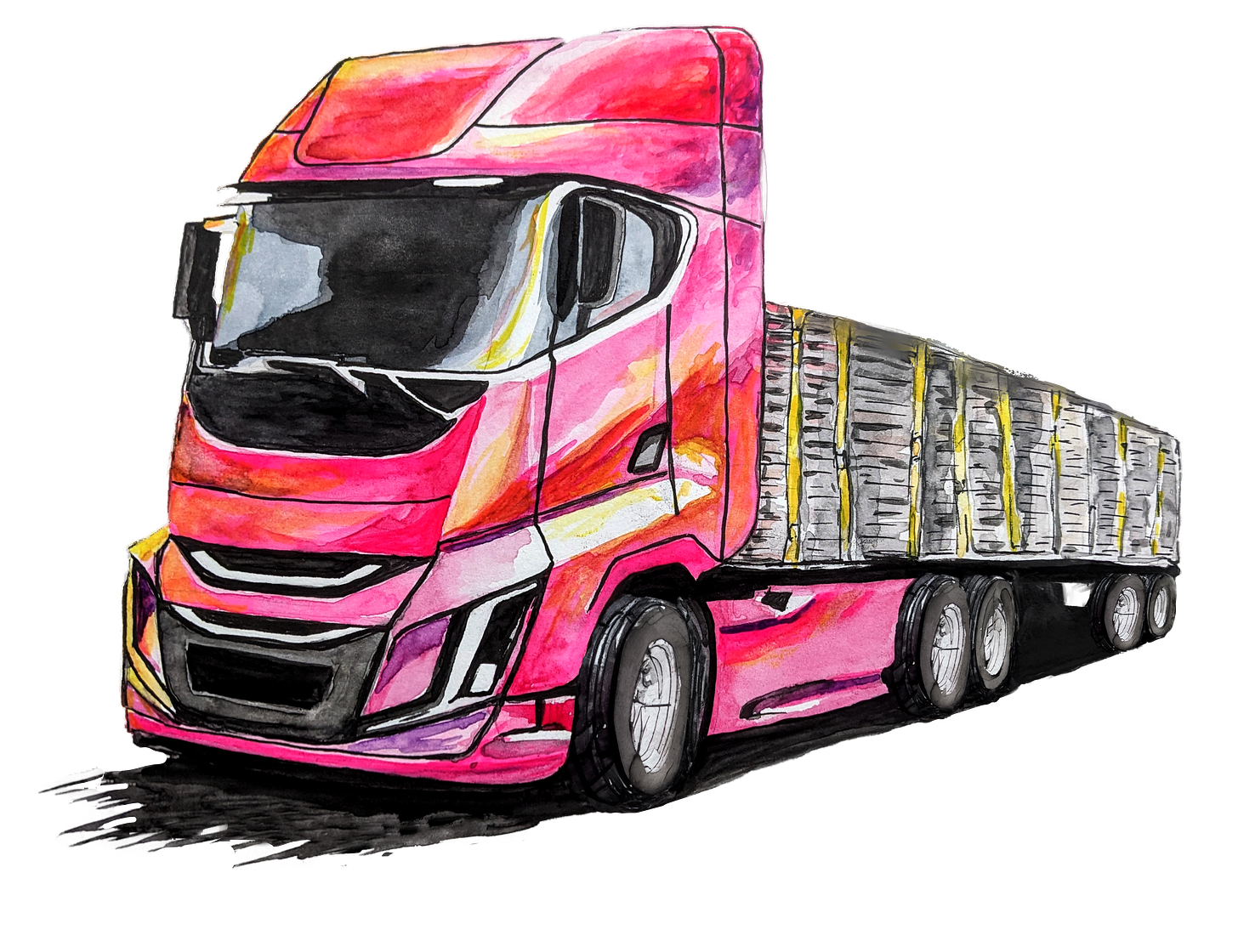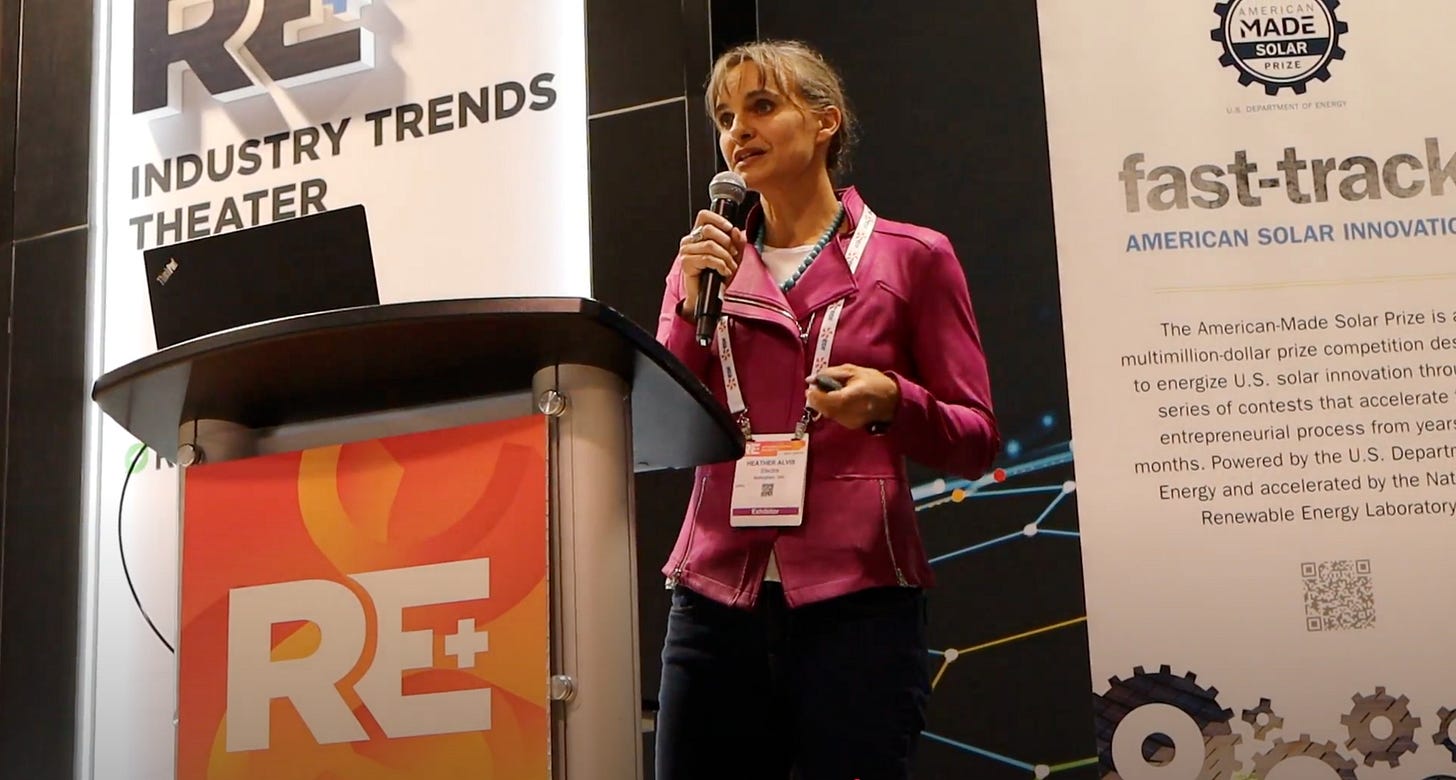How I Won $280K from HeroX to Launch My Circular Startup
A behind-the-scenes look at how Electra was born—with watercolors, Zoom hacks, and a lot of grit.
When I first stumbled on HeroX’s American-Made Challenges, I didn’t think I stood a chance. These are highly competitive, Department of Energy-backed competitions—over 100 of them exist—designed to fund innovative, high-impact climate solutions.
But I was hooked.
Non-dilutive funding.
National lab support.
Industry mentors.
I had an idea and a sketchbook. Could I turn it into a company?
Spoiler: I did.
Through three prize rounds and one terrifying live pitch, I raised $280,000 for Electra, a solar panel tracking and stewardship platform that keeps panels out of landfills and in circulation.
Here's how it happened—and how you can do it too.
2022: My First Attempt (aka: Failure That Launched Everything)
My first application was scrappy and heartfelt. I proposed a reuse program to deliver secondhand solar panels and battery kits to off-grid elders during extreme heat waves.
I didn’t win.
But I learned something invaluable: to win, you must show massive impact—measurable, scalable, and system-wide.
I went back to the drawing board.
From Idea to Ink: Crafting Electra
I kept circling back to this question:
What if we didn’t just reuse panels, but built a system to track and collect them all—broken or not?
I live in Washington, the only state with a solar panel takeback law.
The timing was perfect. I envisioned Electra as a digital logistics and registry platform—a central brain for managing solar panel reuse and recycling across the country.
I applied to the American-Made Solar Prize (Round 7) starting with little more than a notebook sketch, several interviews with installers and PV manufacturers, and a vision.
The Art of the Pitch (Literally)
The hardest part?
The video.
I panicked trying to record myself in my garage with a lapel mic and an old panel. Nothing worked. I finally gave up—and pulled out my watercolors.
That moment cracked everything open, and ideas finally started to flow.
I storyboarded a picture-book-style narrative, painted the slides, imported them into Google Slides, and recorded my voice over a Zoom meeting.
The result wasn’t fancy—but it was powerful. It told the story of Electra in a simple, visual way. That approach got me through three prize rounds—and I still use it today (with a little help from AI).
This is it…yikes, I can hardly watch it. 🤦♀️
The Results Came Late… But They Came
The announcement was delayed seven(!) times. When the email finally landed in my inbox, Electra was ON THE LIST.
We’d made it through the first phase!!!.
I cried and jumped in the air, freaking out my dog, yelling over and over.
Then I called my parents.
Then I called my engineers.
We got to work. Over the next six months, we built our prototype, refined our vision, and learned how to tell our story in 2,500-word bursts.
I lived in ChatGPT, tightening every paragraph to meet the word count and evaluation criteria.
I recorded two more videos—this time in front of the camera, with a green screen, better mic, and a teleprompter script app.
A Last-Minute Win
Just as we were wrapping up our final Solar Prize submission, someone flagged a new competition: the Re-X Before Recycling Prize.
With three days to spare, I pulled together another watercolor video and application.
I hit submit with 10 minutes left on the clock.
We won that one too.


What I Learned: Tips for Aspiring Prize Winners
If you're a startup founder, policymaker, or industry innovator with a highly impactful idea—this is your chance. These prizes may not last forever.
Here's my playbook:
Start early: Begin drafting as soon as you can. You'll need time to internalize the requirements and align your idea with the criteria.
Map to impact: Make your story BIG. Think systems, scale, and equity.
Use visuals: Explain your complex idea like a children’s book—art, slides, video, music whatever you’ve got (especially anything that will make you stand out).
Refine relentlessly: Write section by section. Edit with AI. Trim the fluff. Maximize the word count.
Hack the pitch: Can’t film yourself? Draw. Use Google Slides. Add audio. Make it creative and human.
Leverage every phase: Each round gives you feedback, funding, and visibility. Keep going, even if it’s just an idea.
Epilogue: The Live Pitch (and the One I Didn’t Win)
For the finals, I had to give a live pitch. It was the most terrifying thing I’ve ever done—and I’ve spoken to manufacturers, investors, and entire departments of ecology.
My hands shook. My voice cracked. I lost my place a couple times.
I didn’t win that final stage. But I came out the other side stronger, more confident, and with a continually evolving vision of what this business needs to become in order to get to the next phase—and that's the real win.
Want to see more of the videos I submitted? Check out our YouTube channel.
If it helps you take that next leap, let me know.
Are you considering applying for an American-Made Challenge?
Drop a comment or reach out—I’d love to cheer you on.
Circular Unicorn is all about building this ecosystem together.




